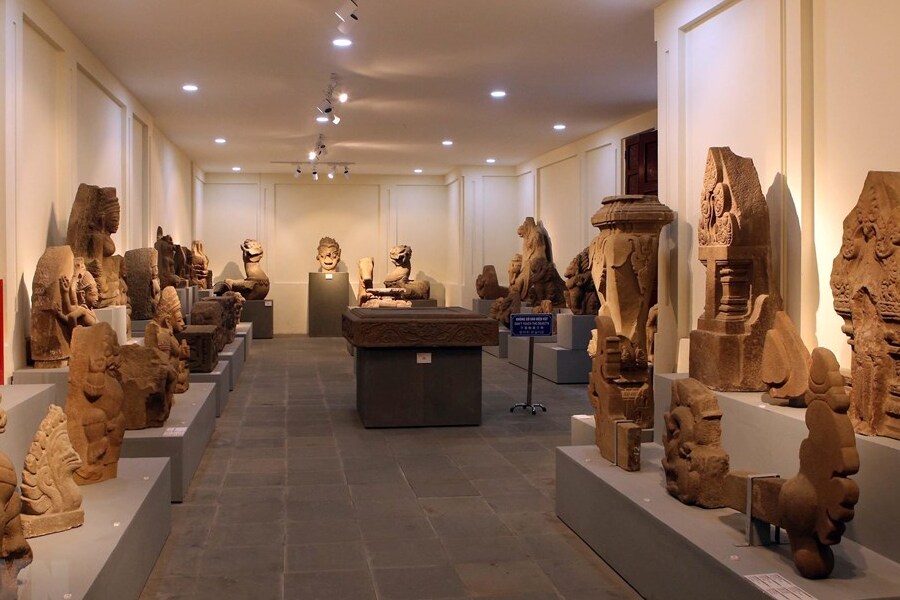Location of Cham Sculpture Museum
The Cham Sculpture Museum is located at the intersection of 2/9 Street and Trung Nu Vuong Street in Hai Chau District, Da Nang City, Vietnam. This convenient location makes it easy for visitors to find and explore. Additionally, the museum is located opposite the Vietnam Television Center in Da Nang, making it even more convenient to find directions.
History of the Cham Sculpture Museum
The Cham Sculpture Museum was built from 1915 to 1919 by French archaeologists, particularly those working for the Ecole Francaise d’Extreme-Orient (EFEO). By the end of the 19th century, several large-scale archaeological excavations of Cham culture had been conducted by French archaeologists and those working for the EFEO. Numerous artifacts were unearthed, and the idea of establishing a museum to house and preserve these relics was born.
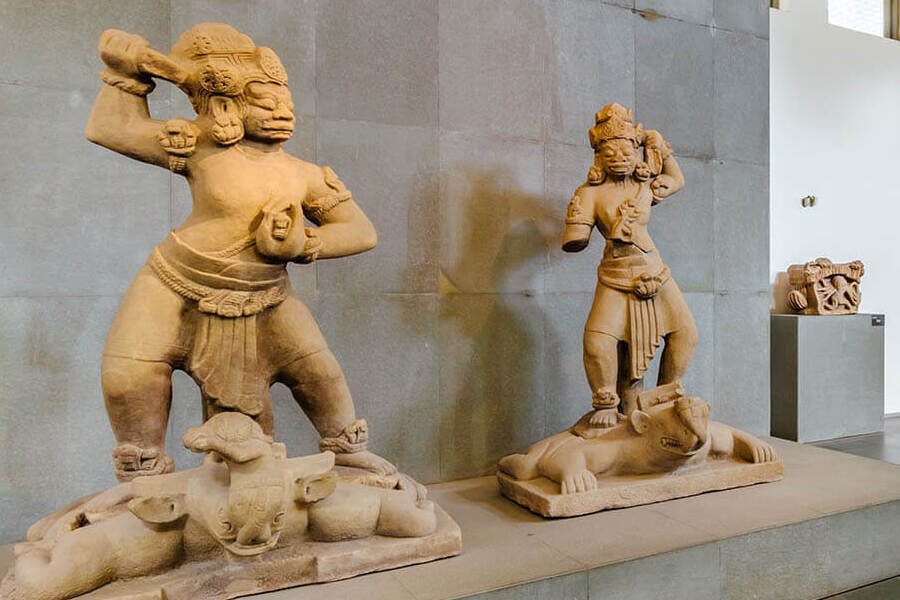
The museum was initially opened to the public in 1919 after four years of construction, which is a must-visit Vietnam shore excursions destination. Since then, the Cham Sculpture Museum has undergone three renovations and expansions: in the mid-1930s, 2002, 2005, and most recently in 2016. The museum is a testament to the passion and dedication of French archaeologists and other archaeologists from the EFEO, along with Vietnamese archaeologists, in collecting and preserving ancient artifacts.
How to Get to the Cham Sculpture Museum?
The Cham Sculpture Museum is located just 3 km east of Da Nang city center and about 29 km west of Hoi An Old Town. Therefore, you can still get there by car, motorbike, or bus.
By car or motorbike
If you are not a confident driver, you can choose to take a taxi or rent a private car in Da Nang to get to the Cham Museum safely and comfortably for sightseeing without worrying about the sun or rain. However, when visiting Da Nang, you should not miss the experience of the cool and comfortable feeling of driving your own motorbike along the coast. With motorbike rental service in Da Nang, you can use the good value motorbike rental service and easily choose the most suitable means of transportation for you.
By bus
Depart from the Da Nang city center bus station (Quang An 1 Industrial Joint Stock Company) to catch buses that go through the city center to get to the Cham Museum. A small note is that the buses here run on average every 20-30 minutes and the ticket price is from 5,000 to 10,000 VND for one way, so you need to prepare small bills in advance so as not to be flustered when taking the bus.
Cham Sculpture Museum Entrance Information
The entrance fee to the Cham Sculpture Museum in Da Nang is 60,000 VND/person/visit for adults and 10,000 VND/time/person for students. Students participating in educational programs are still free of admission
- Address: No. 02, 2/9 Street, Da Nang City, Vietnam
- Opening hours: 7:00 AM to 5:00 PM daily
- Additional information:
If you need explanations about the exhibits on display here. Apply to serve groups of 5 or more people in Vietnamese – English – French.
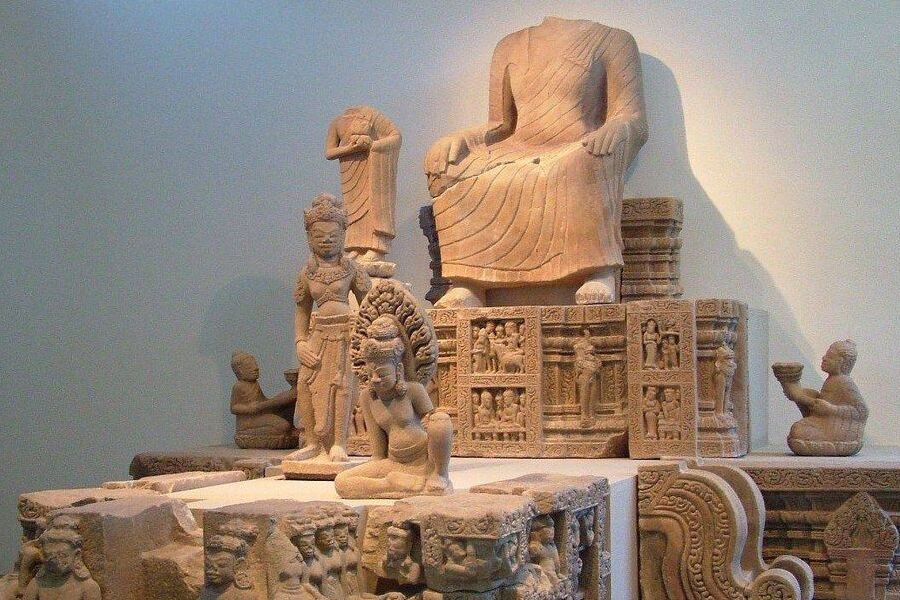
Some notes when visiting the Cham Sculpture Museum
The museum will stop accepting tour registrations at the counter before 10:00 AM and before 4:00 PM to ensure the minimum time for the tour according to the itinerary.
Groups with their own guide or requiring English and French language guides should contact at least 3 days in advance.
For cases of exemption and reduction of fees, please contact the museum for detailed information.
It is recommended to take a tour with a guide to get a more detailed introduction to the museum and you will learn many interesting things that you may not find in books.
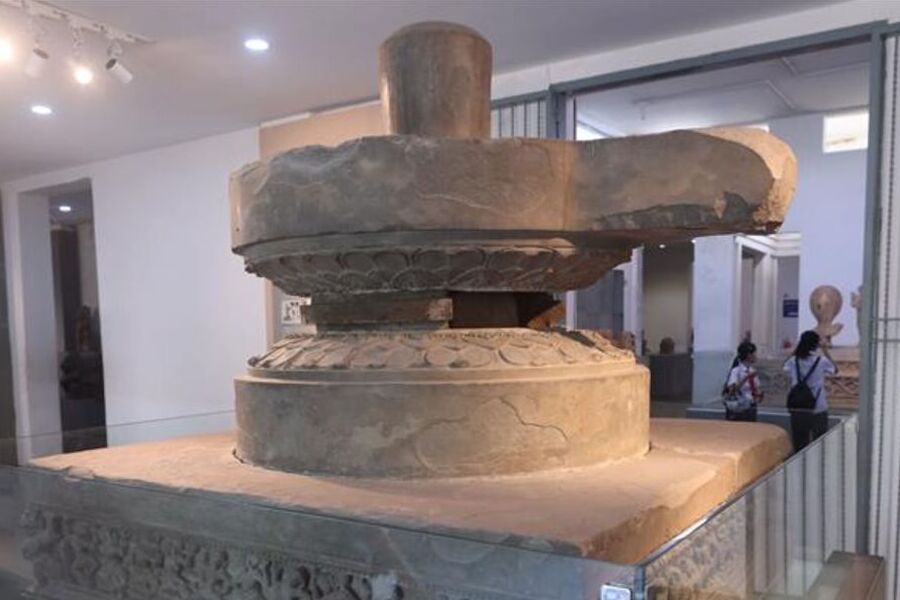
What to see and do at the Cham Sculpture Museum?
Explore the distinctive architecture of the Cham Museum
The Cham Sculpture Museum is classified as a grade 1 museum in Vietnam, affirming the role and significant contributions of this Sculpture Museum in the preservation and promotion of cultural heritage values. It attracts visitors not only for its unique overall architectural style but also for the diversity of artifacts on display.
The architectural style of the museum is designed in the famous Gothic style by two French architects. The highlight of the main building is the arched roofs with pointed tips that make the museum stand out in the cityscape, along with the spacious rooms with many windows that allow sunlight to enter the entire space,… all of which are imbued with French culture as intact as it was originally preserved to this day.
When you step here, you will feel the ancient atmosphere with the yellow
Listen to a presentation about the history of the Cham Sculpture Museum
The artifacts are divided into different exhibition rooms depending on the area where they were excavated such as Tra Kieu, Mam Tower, My Son… making it easy for visitors to visit and explore. Currently, the museum is holding and displaying more than 2,000 cultural artifacts of the Cham dynasty, however, only about 500 artifacts are displayed, the rest are stored in the warehouse. There are 3 artifacts classified as national treasures, namely My Son E1 altar, Tra Kieu altar and Tara Bodhisattva statue.
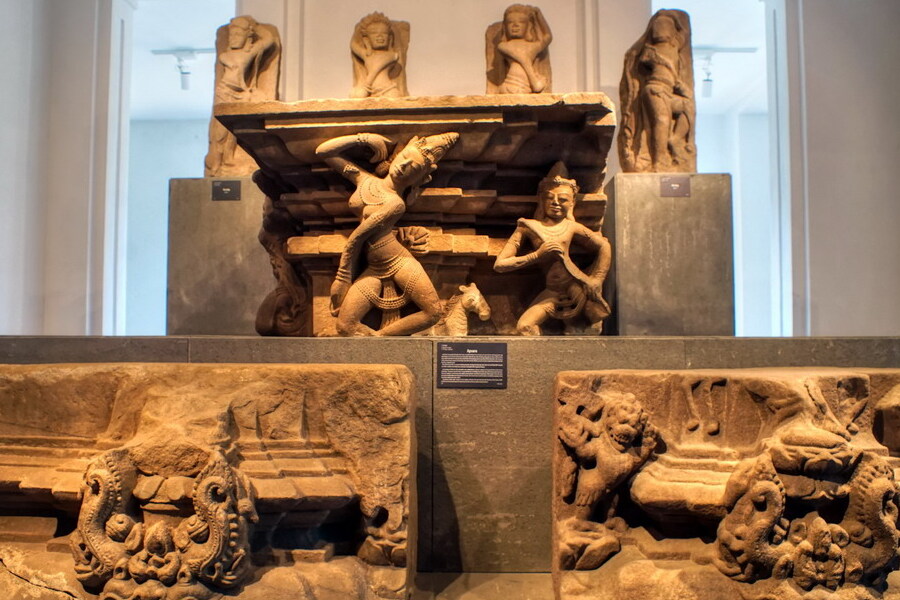
Most of the artifacts in this Cham Sculpture Museum are made of baked clay, bronze and sandstone. The most notable feature is the very delicate and distinctive carvings of patterns and motifs of the Cham people. In particular, the most outstanding artifacts in the museum are the statue of Shiva dancing, the relief of Yaksa and Krishna, the Linga-Yoni altar, the statue of the Naga serpent god, the Tra Kieu dancing girl and the statue of the goddess of happiness Laksmi… In addition, behind the museum is a room displaying pictures and documents about Cham architecture and other unique architectural works in Southeast Asia. Thanks to these sculptural artifacts, visitors can learn more interesting things about the unique Cham Pa culture, understand more about the history of a once prosperous Cham Pa nation.
Admire the exquisite Cham sculptures
The Cham Sculpture Museum houses an extensive collection of Cham sculptures, considered some of the finest examples of Cham art. These sculptures depict a variety of religious, mythological, and everyday scenes, and are incredibly detailed and expressive.
Some of the most popular sculptures in the museum include:
- The statue of Shiva dancing: This statue depicts the Hindu god Shiva in a dynamic dance pose. The statue is incredibly detailed, with intricate carvings of Shiva’s body and ornaments.
- The relief of Yaksa and Krishna: This relief depicts the Hindu god Krishna playing the flute to the Yaksa (nature spirits). The relief is known for its beautiful composition and delicate carvings.
- The Linga-Yoni altar: This altar is dedicated to the Hindu gods Shiva and Parvati. The altar is made of sandstone and is decorated with intricate carvings of lingas (phallic symbols) and yonis (vaginal symbols).
- The statue of the Naga serpent god: This statue depicts the Naga, a serpent-like creature that is revered in Cham mythology. The statue is made of bronze and is known for its powerful and menacing expression.
- The Tra Kieu dancing girl: This statue depicts a young woman dancing. The statue is known for its graceful and elegant form.
- The statue of the goddess of happiness Laksmi: This statue depicts the Hindu goddess Laksmi, the goddess of wealth and prosperity. The statue is made of sandstone and is decorated with intricate carvings of Laksmi’s jewelry and ornaments.
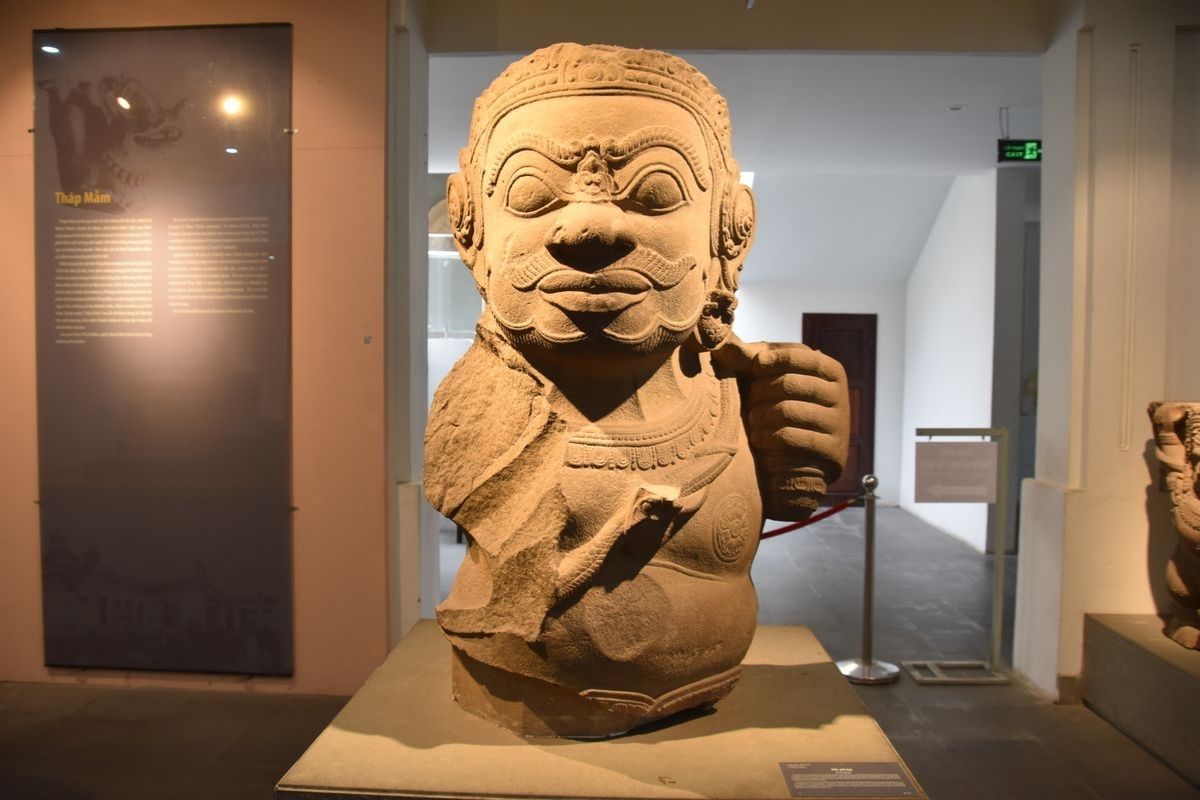
Learn about Cham culture and history
In addition to its collection of sculptures, the Cham Sculpture Museum also houses a number of exhibits that tell the story of Cham culture and history. These exhibits cover a wide range of topics, including Cham religion, art, architecture, and society.
The museum’s exhibits are well-curated and informative, and they provide a great opportunity to learn more about this fascinating culture.
Take a guided tour
The Cham Sculpture Museum offers a variety of guided tours, which are a great way to learn more about the museum’s collection and Cham culture. Tours are available in Vietnamese, English, and French.
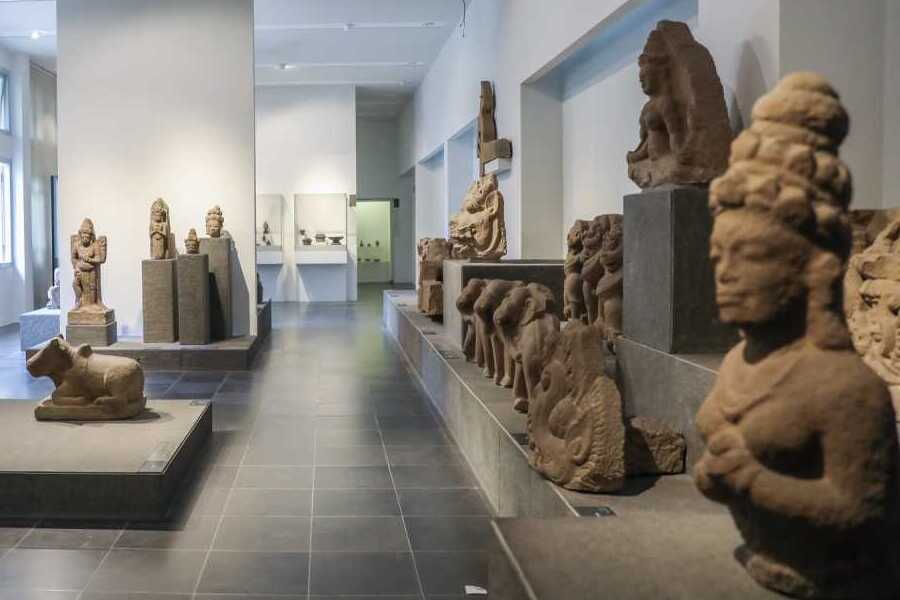
Relax in the museum’s gardens
The Cham Sculpture Museum has a beautiful garden that is a great place to relax and enjoy the peace and quiet. The garden is also home to a number of sculptures, and it is a great place to take photos.
Visit the museum’s gift shop
The Cham Sculpture Museum has a gift shop that sells a variety of souvenirs, including books, postcards, and replicas of Cham sculptures. Cruise passengers could visit museum at the end of Da Nang shore excursions and buy some souvenirs.
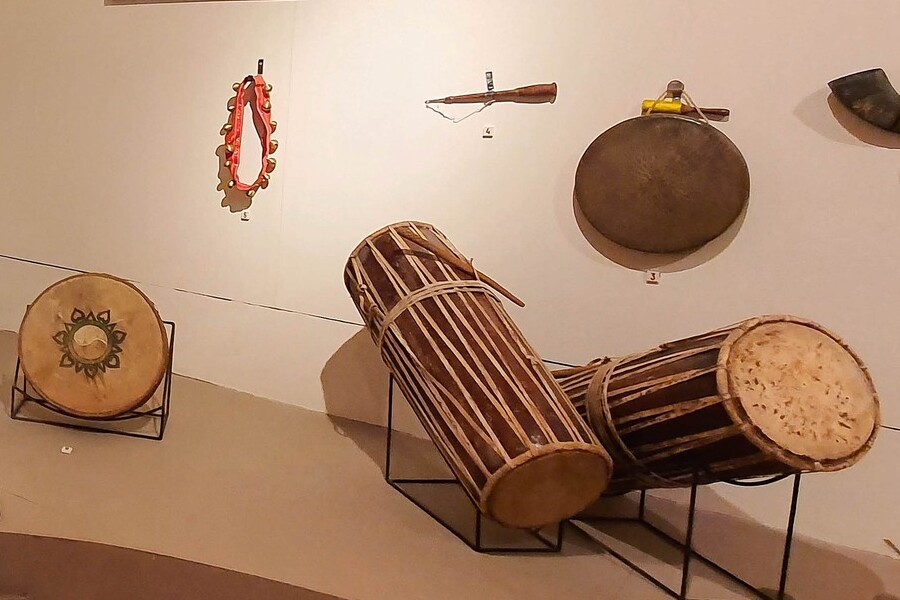
Tips for visiting the Cham Sculpture Museum
- The museum is open from 7:00 AM to 5:00 PM daily.
- The entrance fee for adults is 60,000 VND, and the entrance fee for students is 10,000 VND.
- The museum is closed on Mondays.
- Photography is allowed in the museum, but flash photography is not permitted.
- Visitors are asked to dress modestly and respectfully.
- The museum is wheelchair accessible.
- The museum offers a variety of educational programs for schools and groups.

